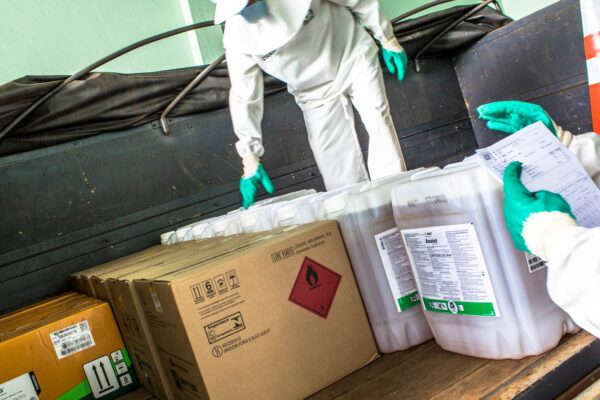A customs declaration is one of the primary forms required when shipping cargo into or out of a country. This document gives details of what is being imported/exported. When moving your freight internationally, you must be aware that you need to declare goods correctly. The reasoning behind a declaration is to let customs authorities monitor what is going through a country. This way, they can protect a country against potentially dangerous goods entering or leaving.
Declaring Hazardous Materials
A hazmat is an abbreviation for a hazardous material that may risk the environment, property, or a person’s health. Freight considered hazmat is toxic or easily flammable when released into the air or dangerous when spilled into the ocean. Examples of these types of goods include:
- Radioactive materials.
- Explosives like ammunition and gunpowder.
- Pest control and insecticide products.
- Flammable liquids like paint and alcohol.
These goods follow unique precautionary methods when being handled. A shipper must fill out the dangerous goods declaration form before the goods leave the country. It is also crucial to research if the specific freight shipped is allowed entry into the destination country.
What to Know Before Shipping Hazmat
Before shipping Hazmat, it is crucial to classify the freight according to the IMDG code. The International Maritime Dangerous Goods Code, or IMDG, is an international guide for classifying dangerous goods. The IMDG segregates cargo into nine different classes according to its risk type. For example, class 1 is explosives, and class 8 is corrosives. The nine classes each have their subdivisions grouping the substances. Classification is further separated into packing groups, UN Numbers, and shipping names.
A Packing group is the grouping by the level of risk and ranges from group one being the most dangerous to three being the least. When packing the hazmat, it is essential to understand the correct way to fill it. This can vary depending on the type of freight. The labeling of the class should be accurate and visible on the packing. Loaders should follow particular guidelines when loading the goods unto the container. Certain hazmat can be segregated from the rest of the freight, and the carrier places it under specific temperature requirements.
The Consequences of not Declaring or Labeling Correctly
Not declaring or labeling a shipment properly may result in a monetary penalty or repossession. More importantly, it can lead to putting others at risk. If a Hazmat goes unnoticed when packing, it may not get administered the proper handling. Without the correct handling, leakage or deterioration could occur. In a worst-case scenario, it may even explode and cause harm.
In most cases, when freight goes through customs, the authority will not open the package to check what is inside. They will go by the documentation and labels on the packaging. If you need assistance declaring goods or importing into the U.S., contact A1 Worldwide Logistics at 305-821-8995. We have customs brokers ready to guide you through the shipping process and ensure that you label cargo correctly.






